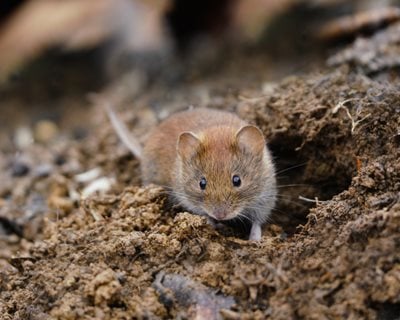Safeguard Your Yard: Reliable Vole Control Techniques
Safeguard Your Yard: Reliable Vole Control Techniques
Blog Article
Comprehensive Guide to Reliable Vole Parasite Control: Problem Recognition and Therapy Approaches
In the realm of effective bug control, vole invasions position a distinct challenge that requires a calculated method. These small rats, often incorrect for mice, can damage gardens, yards, and plants if left untreated. Recognizing the indications of vole existence and carrying out targeted therapy approaches are crucial parts of a successful parasite management plan. By discovering the subtleties of vole habits, recognizing crucial indications of problem, and assessing a series of control choices, one can develop a comprehensive method to combat these elusive parasites.
Comprehending Vole Habits
Vole actions is identified by their burrowing practices and fast reproduction rates, making them a difficult bug to regulate effectively. These small rodents generally produce complex passage systems underground, using them for shelter, food storage, and transport. Voles are herbivores, eating a range of plants, light bulbs, lawns, and origins, which can trigger considerable damages to gardens, orchards, and yards. Their fast reproductive rate further complicates control initiatives, with ladies qualified of producing multiple litters in a single year, each including numerous spawn.
Understanding vole actions is essential for reliable pest control methods. By recognizing their burrow places, monitoring feeding areas, and applying targeted control techniques, such as capturing or habitat alteration, vole invasions can be managed effectively.
Signs of Vole Problem

Avoidance Strategies
Applying effective prevention approaches is important in reducing vole problems and securing greenery from their devastating feeding practices (vole pest control). To stop vole infestations, it is important to begin by eliminating potential food sources and shelter. Maintain grass and greenery trimmed short, get rid of weeds and particles, and keep a tidy garden or lawn to make the area less eye-catching to voles. Mounting barriers such as hardware cloth or below ground secure fencing can also help prevent voles from entering specific areas. Additionally, reducing excess wetness by taking care of leaky pipelines and making sure proper drainage can make the atmosphere much less hospitable for voles.
Regularly evaluating the residential or commercial property for signs of vole task, such as paths and burrow openings, is crucial for very early detection and prompt activity. If vole task is presumed, think about utilizing traps or repellents tactically put near their pathways. Utilizing all-natural predators like owls or serpents can also help maintain vole populations in check. By carrying out a combination of these avoidance homeowners, garden enthusiasts and strategies can imp source successfully secure their plants from vole damage.
Non-Lethal Control Approaches
To properly handle vole populaces while focusing on gentle techniques, non-lethal control strategies provide functional services for minimizing vole damages in landscapes and yards. These barriers can be hidden at least 12 inches deep and curved at a 90-degree angle to avoid voles from tunneling underneath.

Lethal Control Options
One effective approach for attending to vole infestations in landscapes and gardens entails the calculated use deadly control choices. When encountered with a serious vole problem that non-lethal techniques have stopped working to include, carrying out deadly control actions comes to be critical. One frequently employed dangerous control option is the usage of breeze traps. These catches are designed to swiftly and humanely kill voles upon activation, making them a popular choice for many garden enthusiasts and landscaping companies. To boost the efficiency of breeze traps, it is suggested to position them in locations where vole activity is high, such as along runways or near burrow entrances. One more dangerous control alternative is the usage of hazardous lures particularly created to target voles. These lures contain toxin that is consumed by the voles, resulting in their eventual death. Nonetheless, caution should be worked out when making use of harmful lures to prevent injury to non-target pets or animals. On the whole, when utilizing dangerous control options, it is necessary to do so responsibly and based on neighborhood policies to properly handle vole problems.
Final Thought
Finally, reliable vole parasite control requires a detailed understanding of vole habits, recognition of signs of infestation, application of prevention approaches, and utilization of both deadly and non-lethal control approaches. By integrating these strategies, individuals can properly handle vole populaces and safeguard their residential property from damage. It is very important to deal with look at here now vole infestations without delay to avoid more problems and decrease the effect on the surrounding setting.
Given the detailed tunnel systems and fast reproduction rates particular of voles, acknowledging the indications of vole problem ends up being crucial in efficient parasite control. One of the primary indicators of vole existence is the visibility of surface area paths or trails in turf or snow, commonly about 1-2 inches broad, produced as voles take a trip in between their burrows and food sources.To successfully take care of vole populations while focusing on gentle approaches, non-lethal control strategies use functional services for minimizing vole damages in gardens and landscapes.One reliable approach for dealing with vole problems in gardens and landscapes includes the tactical usage of deadly control choices. vole lawn damage.In final thought, efficient vole bug control needs a detailed understanding of vole habits, identification of indications of invasion, execution of avoidance approaches, and application of both lethal and non-lethal control methods
Report this page